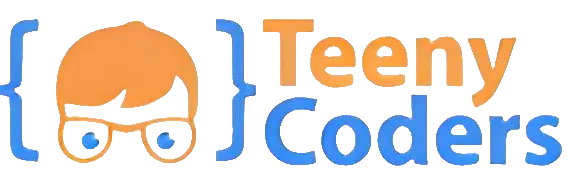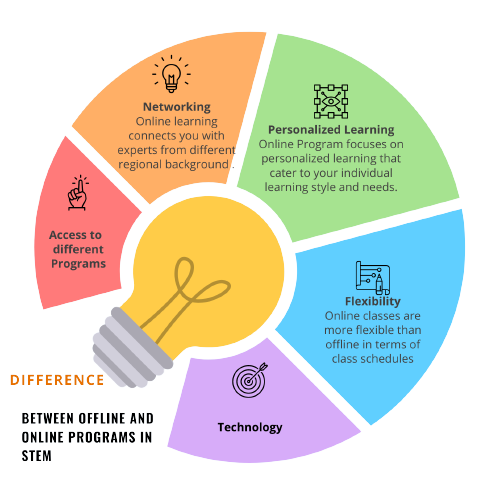There are several differences between online and offline programs in STEM (Science, Technology, Engineering, and Mathematics). Some of these differences include the following:
Flexibility
Online STEM programs offer greater flexibility than offline programs, as students can attend classes from anywhere with an internet connection and at their own pace. That is especially beneficial for working students or having other commitments that make attending regular classes difficult.
Hands-on Experience
Offline STEM programs often provide more hands-on experience than online programs, as students can access physical labs and equipment. In contrast, online programs may offer virtual labs or simulations, but online programs are the best way of learning when it comes to programming.
Personal Interaction
Offline STEM programs allow for more personal interaction with instructors and classmates. In an offline program, students can ask questions and receive immediate feedback; likewise, in an online program, there will be a community from a different cultural background which enables you to think from other’s points of view and enhance your think-out-of-the-box ability.
Networking
Offline STEM programs provide students with more opportunities for networking and building relationships with other students and professionals in the field. These opportunities may be more limited in online programs. In online programs, you have better options for personalized growth in all types of environments. Online programs enable you to explore new opportunities yourself.
Cost
Online STEM programs are often less expensive than offline programs, as they do not require the same infrastructure and support. Additionally, students can save on transportation and housing costs associated with attending an offline program.
Access to Programs
Online programs provide access to many programs that may be available outside of your area or region. This means that you can choose a program that meets your specific needs and interests, regardless of where you live.
Time Commitment
Online STEM programs may require more self-discipline and time management skills than offline programs, as students are responsible for managing their own schedules and keeping up with coursework. Offline programs, on the other hand, often have a set schedule and structure.
Personalized Learning
Online programs often offer personalized learning experiences that cater to your individual learning style and needs. This can help you learn more effectively and efficiently than in a traditional on-campus program.
Technology
Online programs often incorporate the latest technology and tools, which can enhance your learning experience and provide new skills in demand in the job market. STEM offers online programs through its accredited online global coding schools.
Recommendations
Overall, both online and offline STEM programs have their advantages and disadvantages. It is essential for students to carefully consider their goals, preferences, and learning style when choosing between the two. TeenyCoders is one of its online accredited schools, which provides five programming courses: Scratch Programming, Python Programming, Website Development, Android App Development, and Machine Learning.
Coding School offering Online Programs: What TeenyCoders is?
TeenyCoders is a program or organization that offers coding classes and workshops to young children, typically between the ages of 6 and 17. The program is designed to teach children how to code and program computers to develop their problem-solving, logical thinking, and creative skills.
Workshops and Classes
The classes and workshops are typically held in a structured and supportive environment where students can learn at their own pace and receive guidance from experienced instructors. Our online courses support all the above features.
TeenyCoders may use various tools and platforms to teach coding, including block-based programming languages like Scratch and web development tools like HTML, CSS, JavaScript, and Python. The program often uses project-based learning, where students work on real-world coding projects and apply what they have learned in class.


